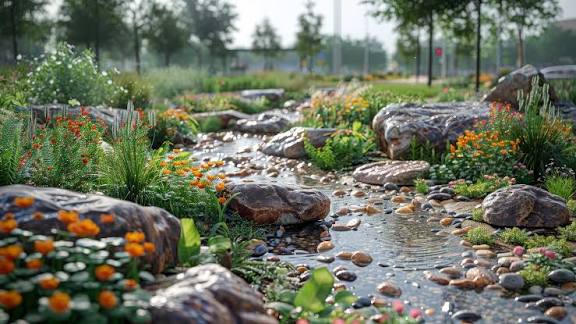A beautiful garden doesn’t just have to be about flowers and greenery—it can also play a big role in protecting the environment. That’s where the rain garden comes in. Designed to capture and filter rainwater, rain gardens reduce flooding, prevent pollution, and create a thriving home for native plants and pollinators. If you’ve ever wondered how to make your outdoor space more eco-friendly, it’s time to discover rain garden today!What Is a Rain Garden?A rain garden is a shallow, landscaped depression that collects and absorbs rainwater runoff from roofs, driveways, patios, or lawns. Instead of letting stormwater wash pollutants into drains and streams, rain gardens naturally filter water through soil and plants.Benefits of a Rain GardenReduces Flooding: Helps absorb heavy rainfall and prevents water pooling.Improves Water Quality: Filters out toxins, chemicals, and debris before they reach rivers and lakes.Supports Wildlife: Provides food and habitat for bees, butterflies, and birds.Low Maintenance: Once established, rain gardens require minimal upkeep.Boosts Curb Appeal: A well-planned rain garden is both functional and beautiful.Choosing the Right Plants for a Rain GardenRain gardens thrive with native plants that can handle both wet and dry conditions. Some popular choices include:North America: Black-eyed Susan, coneflower, milkweed, and switchgrass.United Kingdom: Purple loosestrife, marsh marigold, and sedges.Canada: Joe Pye weed, cardinal flower, and blue flag iris.How to Build a Rain Garden1. Pick the LocationChoose a spot downhill from a roof or driveway where water naturally flows. Avoid areas with standing water.2. Design the Shape & SizeMost rain gardens are shaped like gentle bowls and range from 100–300 square feet.3. Prepare the SoilMix sand, compost, and topsoil for good drainage.4. Plant StrategicallyCenter: Moisture-loving plants (e.g., irises, marsh marigolds).Edges: Drought-tolerant plants (e.g., coneflowers, grasses).5. Mulch & MaintainMulch helps retain moisture and prevent weeds. Water plants during the first growing season until established.Practical Tips for Rain GardensAvoid Chemicals: Skip pesticides and fertilizers to keep the water clean.Think Seasonal: Use a mix of plants for year-round beauty.Plan for Overflow: Add an outlet area for excess water during storms.Attract Pollinators: Plant flowers that support bees and butterflies.ConclusionWhen you discover rain garden today, you’re not just upgrading your landscape—you’re contributing to a healthier environment. Rain gardens blend beauty with sustainability, offering a practical way to manage stormwater while supporting local ecosystems.So why wait? With just a little planning, you can transform your yard into a rain garden that benefits both you and the planet. 🌱💧

